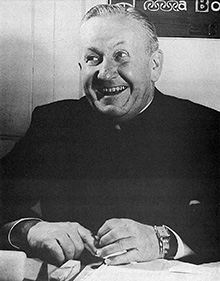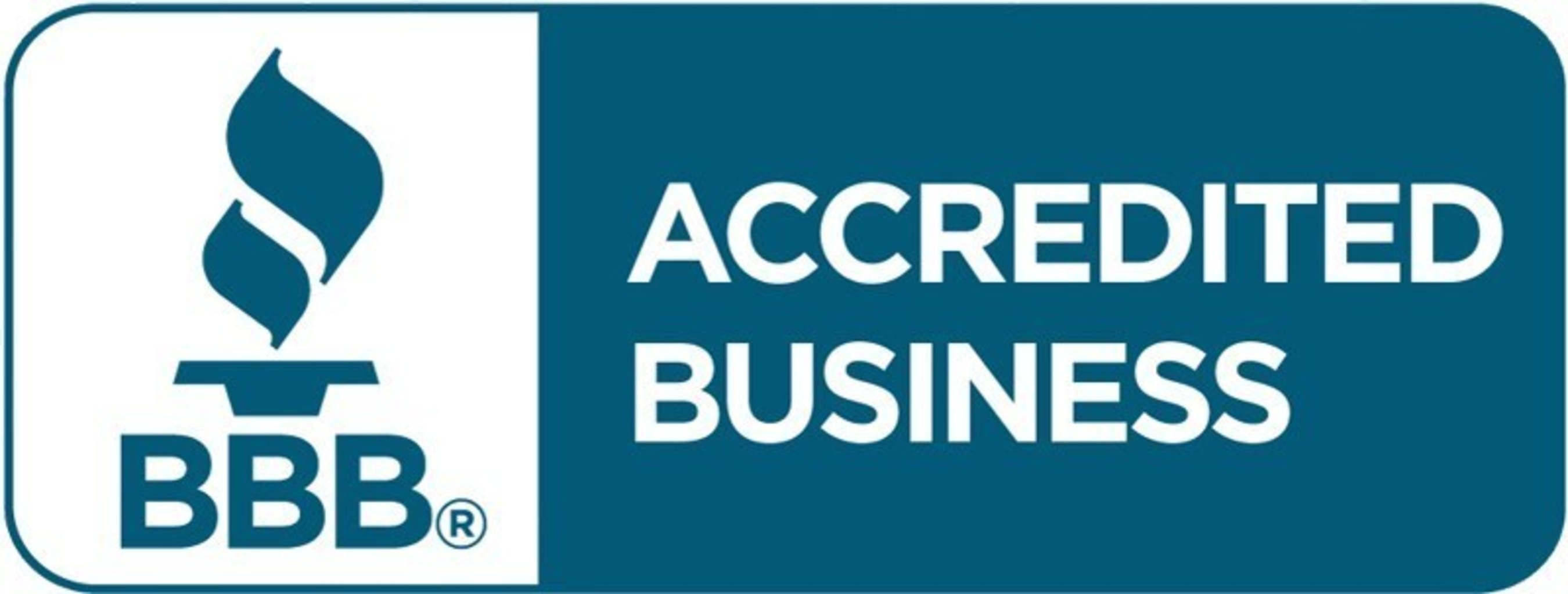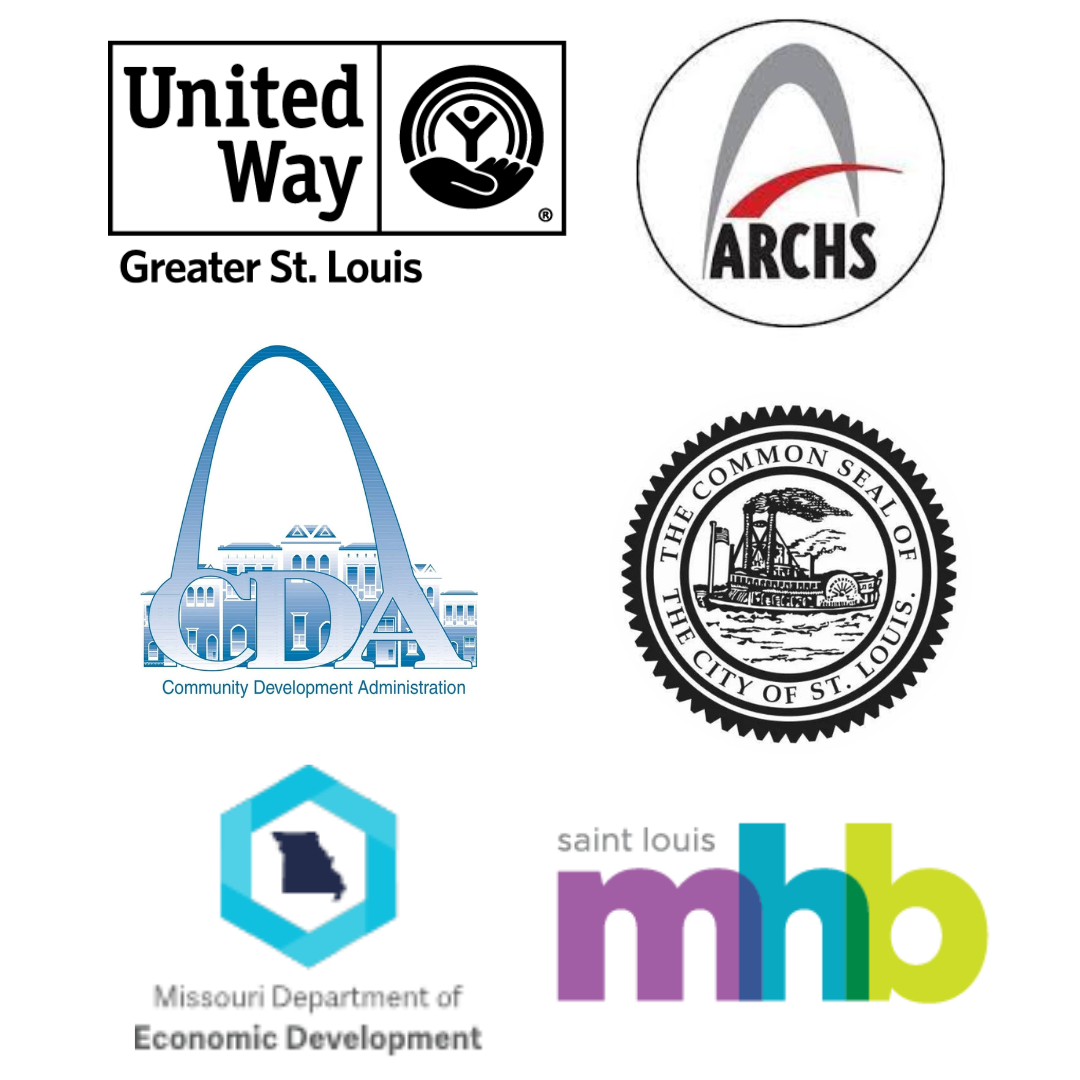Father Charles P. Maxwell launched the GSBC as the Boys’ Club of St. Louis on October 3, 1929 on the second floor of St. Vincent’s Parochial School. Under the sponsorship of the St. Louis Catholic Archdiocese, Fr. Maxwell’s new club was the first officially affiliated boys’ club in the State of Missouri.
By 1933, GSBC had an active membership of over 1,200 boys. It had proved itself worthy of community support and was admitted to the St. Louis Community Chest – the forerunner to the United Way. Over the next 30 years, GSBC moved a number of times before completing and occupying the current 36,000+ square foot facility at 2524 South 11th Street in 1959. In May 2006, to honor Eugene P. Slay, who served as President and CEO from 1993 until his passing in 2011, the Club was renamed the Gene Slay’s Boys’ Club of St. Louis. To reflect its expansion to serve girls on a full time and permanent basis, the Club was renamed the Gene Slay’s Girls & Boys Club of St. Louis in 2016.
Initially a recreation center and safe haven, GSGBC continues to meet the needs of the changing demographics through program enhancement. GSGBC provides high quality and holistic programs that respect and meet the needs of at-risk youth through academics, leadership building, health, athletics, and the arts. GSGBC improves the lives of at-risk and underserved youth who subsist in South St. Louis, while assisting them in the creation of a future free from fear of violence.
Eugene P. “Gene” Slay
A devoted husband and father, an outstanding businessman and philanthropist, Gene was often described as both a teddy bear and tiger.
Eugene P. Slay was born in 1927. Gene was one of seven children growing up on Hickory Street in south St. Louis. Gene was a sports enthusiast throughout his life. At McKinley High School, he excelled in football, baseball, track, and wrestling. In 1944, as a teenager, he was the Missouri State and Ozark A.A.U. Wrestling Champion. He was offered an athletic scholarship to Saint Louis University but World War II had not yet ended and he was drafted for military service. He proudly served from 1945 to 1947; he was in the 7th Division of the U.S. Army, serving his tour of duty in Korea and Japan.
Upon his return from military service, Mr. Slay met his future wife Joan Schadlbauer on the Admiral Cruise ship in St. Louis. They married in 1952 at St. Vincent Catholic Church where he had attended grade school. Together they had seven children: Jeanne, Gary (Laura), Guy (Bob), Glen (Carla), Jill (Jeff) Garlich, Janet (Matt) Westphal, Jeffrey, and twelve grandchildren: Gary, Jacob, Natalie, Kayla, Olivia, Glen, Joanie, Julia, Jeffrey, Alex, Sabrina, and Anthony.
Family was important to him, and like his father, Gene has strong entrepreneurial skills. In 1948, Gene joined his father and began making deliveries throughout the city for the transportation company. During this time, he nurtured relationships with established clients and began developing new customers; his advancement with the company was rapid and impressive. Gradually, in addition to transportation, Gene developed warehousing, packaging, and barging operations, expanding his father’s small commercial enterprise into one of St. Louis’ largest privately held businesses, operating in 48 states, Canada, and Mexico. While growing his business, he was always mindful of helping others.
He believed it was an honor to give back and truly cherished the opportunity to be such a pillar in the philanthropic community. In the early 1960s, Gene, along with Danny Thomas, Alex Aboussie, and other influential Lebanese businessmen, helped form the St. Louis Chapter of ALSAC, the American Lebanese Syrian Associated Charities. The main focus of ALSAC was to raise money for St. Jude Children’s Research Hospital, fighting catastrophic illnesses and diseases affecting children. For his outstanding effort, Danny Thomas presented Gene with an award for outstanding support of the St. Louis Chapter of ALSAC and his other civic and charitable activities.
In 1993, he organized and chaired a benefit for war victims of Lebanon. The event was called “Lebanon We Care,” a Las Vegas-style variety show at the Fox Theatre. Headliners included Danny Thomas, Danny Grans, Rita Moreno, and other celebrities.
He was involved in countless charities and has been commended for his efforts decade after decade, including The Backstoppers, the St. Louis Italian Open for Children’s Charities, St. Louis Rams Chapter of NFL Alumni, Faith House, and the APDA.
As a boy, he was a member of the St. Louis Boy’s Club and found himself continually going back to the Club on South 11th Street to help and contribute toward the development of young boys in need. He served as President of the Club and became Chairman of the Board in 1993. He pursued his dream of creating an endowment large enough to become self-sustaining. Through his leadership, a premier annual golf outing at Norwood Hills Country Club was initiated and became the cornerstone of the fundraising to accomplish his dream. In 2006, in recognition of his long term contributions, the St. Louis Boy’s Club was renamed the Gene Slay’s Boys’ Club of St. Louis in his honor.
He believed that to be successful, one must know where he came from to truly know where he was going.
His family cherishes fond memories of his love of family and the excellent example he set by his compassion and generosity. His legacy will be the many lives he touched young and old, near and far, and the obvious ways he left the world a better place than he found it.
Father Charles Maxwell – Founder
In 1929, Reverend Charles P. Maxwell was named by Archbishop Cardinal Glennon as the first “Catholic Youth Director of St. Louis.” Maxwell’s mission was to work with all boys, regardless of race, color, or creed. Maxwell selected the “slum area” or “Soulard Police District” which had the highest boy population and the highest juvenile delinquency rate in the city.
When the Boys’ Club of St. Louis opened its doors on October 3, 1929, their home was the abandoned St. Vincent’s Parochial School building located on the southwest corner of 9th and Park Avenue. The three-story building was remodeled to offer a gym, game room, showers, and other necessary facilities. To finish construction, Father Maxwell solicited money and materials from friends, St. Louis businesses and professional people. On opening day over 400 boys registered as members.
During the early years, the Boys’ Club of St. Louis often found it difficult to meet monthly operating expenses. Because the predecessor to our now United Way had a three-year waiting period before being eligible to apply for funding, Father Maxwell repeatedly asked friends, business people and companies to support his mission.
In 1930, John McCormick, the famed Irish tenor, gave a Benefit Concert in the old St. Louis Coliseum to support The Boys’ Club. This performance raised almost $7,000. In 1932, the “Notre Dame All Stars” led by the famed All-American quarterback, Frank Carideo, played a Benefit Football Game before a capacity crowd of over 17,000 fans at Walsh Stadium. They faced an All-Star squad of varsity players from St. Louis University and Washington University. This event raised over $10,000 for the Club.
By 1933 the club had an active membership of over 1,200 boys, with an average daily attendance of over 400 youngsters.
Over the next 30 years, the Club moved a number of times before completing and occupying the current facility at 2524 South 11th Street in 1959. Father Maxwell was instrumental in having the Stocke heirs deed a tract of vacant land as a gift to the Boys’ Club of St. Louis. This tract was the former site of the old Green Tree Brewery, located on the northeast corner of 11th and Sidney, in the densely populated tenement-area of the near Southside.
Realizing that time was of the essence, Father Maxwell energized his Board of Directors and created a “Boys’ Club Building Fund.” The dream of a new facility was nearly shattered due to Father Maxwell’s untimely death, but the Board of Directors decided not to end this dream and to proceed with the building program as originally planned. On May 2, 1955, Mr. Harry T. Bussman, Jr., was unanimously elected President. Under his capable direction, business acumen and untiring energy, the drive to raise funds proceeded with amazing results.
The facility plans were the creation of Raymond Maritz and Sons, Inc., Architects. On September 10, 1959 the cornerstone was laid and the building continued. The site covered an approximate square block that included a one-story brick building 200 feet long and 117 feet deep at a cost of over $450,000.
Father Maxwell remained as Chairman of the Board of Directors from its founding in 1929 until his sudden death on April 5, 1955. Throughout his service to the Boys’ Club, he simultaneously carried on his duties as Pastor of a large St. Louis Catholic Church parish.





